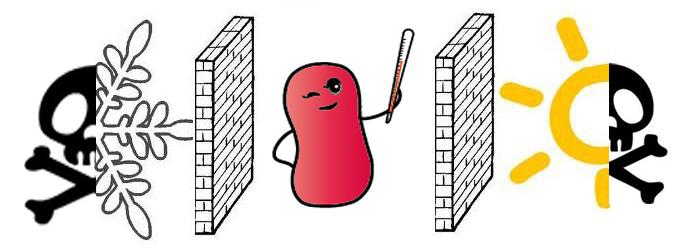Team:Paris-Saclay/Project/Applications - Perspectives
From 2012.igem.org
YohannPetiot (Talk | contribs) |
(→Applications / Perspectives) |
||
| (14 intermediate revisions not shown) | |||
| Line 23: | Line 23: | ||
</head> | </head> | ||
<body> | <body> | ||
| - | <div id="single- | + | <div id="tiles"> |
| - | <div | + | <div id="single-tile3" class="red live-tile" data-mode="flip" data-delay="4000"> |
| - | + | <div> | |
| - | + | <a href="https://2012.igem.org/Team:Paris-Saclay/Project/Abstract"> | |
| - | + | <div class="child-tile"><p class="child-tile">GEMOTE Project</p></div> | |
| + | <img src="https://static.igem.org/mediawiki/2012/7/7c/Project-1.png" alt="" /> | ||
| + | </a> | ||
| + | </div> | ||
<div> | <div> | ||
| - | <img src=" | + | <a href="https://2012.igem.org/Team:Paris-Saclay/Project/Abstract"> |
| - | + | <img src="https://static.igem.org/mediawiki/2012/d/d1/Project2.jpg" alt="" /> | |
| + | <div class="child-tile"><p class="child-tile">GEMOTE Project</p></div> | ||
| + | </a> | ||
</div> | </div> | ||
| - | <script type="text/javascript"> | + | </div> |
| + | <script type="text/javascript"> | ||
// apply regular slide universally unless .exclude class is applied | // apply regular slide universally unless .exclude class is applied | ||
// NOTE: The default options for each liveTile are being pulled from the 'data-' attributes | // NOTE: The default options for each liveTile are being pulled from the 'data-' attributes | ||
$(".live-tile, .flip-list").not(".exclude").liveTile(); | $(".live-tile, .flip-list").not(".exclude").liveTile(); | ||
| - | </script> | + | </script> |
| - | </div> | + | </div> |
</body> | </body> | ||
</html> | </html> | ||
| Line 43: | Line 49: | ||
</div> | </div> | ||
<div id="content-paris-saclay"> | <div id="content-paris-saclay"> | ||
| - | + | ='''Applications / Perspectives'''= | |
| - | [[Category:Team:Paris-Saclay/Project_Gemote]] | + | |
| + | [[Category:Team:Paris-Saclay/Project_Gemote|3]] | ||
| + | |||
| + | ==A temperature monitoring bacterium.== | ||
| + | |||
| + | The first use for our bio-brick is the monitoring of the temperature in a cell culture environment. The organism would change color at a certain temperature, preventing too many degrees difference with the desired temperature to go unnoticed. | ||
| + | [[File:Applications-1.jpg|right|300px]] | ||
| + | There are of course many electronic or physical ways to measure the incubator's temperature with a great degree of precision. However, it is harder to monitor the temperature actually experienced by the bacteria contained in multiple Erlenmeyer flasks. Also, cultures are often removed from their incubator at frequent intervals in order for samples to be taken (for example to measure the absorbency). How to know if this “field trip” was sensed by the bacteria? | ||
| + | What could be better than the use of bacteria to indicate what temperature is being sensed? | ||
| + | |||
| + | If the bacteria feel too hot or too cold, we give them the opportunity to let us know ! And in a stylish way, if you please ! | ||
| + | |||
| + | ==A temperature prison== | ||
| + | |||
| + | [[File:Temp app.jpg|center|500px]] | ||
| + | |||
| + | A more extreme version of our organism would consist of replacing the lycopene bio-synthesis chain (imparting the color red) by a toxin gene from a toxin/antitoxin system (TA module). The most common toxin, whose gene is available for example in bio-brick BBa_P1016, is ccdB. This toxin works by binding itself to the bacterial gyrase, inhibiting its functioning and therefore bringing death to the cell. This toxin has the advantage of not transmitting itself to the surrounding bacteria, and isn't toxic either for humans: the cell dies alone. So, our construction will be like below. | ||
| + | |||
| + | [[File:Toxin app.jpg|center]] | ||
| + | |||
| + | The toxin would only be synthesized when the temperature goes under 32°C or when it goes over 42°C. This makes possible several applications: | ||
| + | |||
| + | *<ins>Anti-invasion bacteria:</ins> | ||
| + | The biggest risk when working with GMOs is accidental dissemination. Scaring the public (and sometimes also the scientist), this risk is a never-ending concern. With our system, if bacteria find their way into the real world for some reason or other (broken or dropped Erlenmeyer flask, air-transmissible bacteria...), the temperature change will cause its suicide and will prevent a synthetic plasmids dissemination. | ||
| + | |||
| + | *<ins>A thermal-dependent screening method.</ins> | ||
| + | Research in molecular biology requires screening tools. Currently, resistance to antibiotics or auxotrophy are often used to this purpose. It is possible to imagine experiments in which the undesired bacterium's survival is needed for a certain time before it is eliminated. The inducible system that we have imagined allows for easy elimination, by simply raising or lowering the culture's temperature. | ||
| + | |||
| + | *<ins>A guardrail for probiotic bacteria.</ins> | ||
| + | Certain bacteria have a now known probiotic effect, and even used by agribusiness firms (for example Actimel and Danone). It isn't hard to imagine that in the near future, GMO bacteria are part of lyophilized food supplements. We are giving a way of guaranteeing ourselves of these bacteria's harmlessness (or at least of contributing to their harmlessness). After living the good life in our 37°C intestins, a certain quantity of bacterial matter is evacuated into the environment once we have gone to the bathroom. In the same way as above, since the bacteria would be in a cold environment, the toxin gene would bring around their disintegration, as well as the disintegration of the synthetic plasmid they are carrying. | ||
| + | |||
{{Team:Paris-Saclay/Follow}} | {{Team:Paris-Saclay/Follow}} | ||
| + | </div> | ||
</div> | </div> | ||
</div> | </div> | ||
{{Team:Paris-Saclay/Footer}} | {{Team:Paris-Saclay/Footer}} | ||
Latest revision as of 00:18, 27 September 2012
Applications / Perspectives
A temperature monitoring bacterium.
The first use for our bio-brick is the monitoring of the temperature in a cell culture environment. The organism would change color at a certain temperature, preventing too many degrees difference with the desired temperature to go unnoticed.
There are of course many electronic or physical ways to measure the incubator's temperature with a great degree of precision. However, it is harder to monitor the temperature actually experienced by the bacteria contained in multiple Erlenmeyer flasks. Also, cultures are often removed from their incubator at frequent intervals in order for samples to be taken (for example to measure the absorbency). How to know if this “field trip” was sensed by the bacteria? What could be better than the use of bacteria to indicate what temperature is being sensed?
If the bacteria feel too hot or too cold, we give them the opportunity to let us know ! And in a stylish way, if you please !
A temperature prison
A more extreme version of our organism would consist of replacing the lycopene bio-synthesis chain (imparting the color red) by a toxin gene from a toxin/antitoxin system (TA module). The most common toxin, whose gene is available for example in bio-brick BBa_P1016, is ccdB. This toxin works by binding itself to the bacterial gyrase, inhibiting its functioning and therefore bringing death to the cell. This toxin has the advantage of not transmitting itself to the surrounding bacteria, and isn't toxic either for humans: the cell dies alone. So, our construction will be like below.
The toxin would only be synthesized when the temperature goes under 32°C or when it goes over 42°C. This makes possible several applications:
- Anti-invasion bacteria:
The biggest risk when working with GMOs is accidental dissemination. Scaring the public (and sometimes also the scientist), this risk is a never-ending concern. With our system, if bacteria find their way into the real world for some reason or other (broken or dropped Erlenmeyer flask, air-transmissible bacteria...), the temperature change will cause its suicide and will prevent a synthetic plasmids dissemination.
- A thermal-dependent screening method.
Research in molecular biology requires screening tools. Currently, resistance to antibiotics or auxotrophy are often used to this purpose. It is possible to imagine experiments in which the undesired bacterium's survival is needed for a certain time before it is eliminated. The inducible system that we have imagined allows for easy elimination, by simply raising or lowering the culture's temperature.
- A guardrail for probiotic bacteria.
Certain bacteria have a now known probiotic effect, and even used by agribusiness firms (for example Actimel and Danone). It isn't hard to imagine that in the near future, GMO bacteria are part of lyophilized food supplements. We are giving a way of guaranteeing ourselves of these bacteria's harmlessness (or at least of contributing to their harmlessness). After living the good life in our 37°C intestins, a certain quantity of bacterial matter is evacuated into the environment once we have gone to the bathroom. In the same way as above, since the bacteria would be in a cold environment, the toxin gene would bring around their disintegration, as well as the disintegration of the synthetic plasmid they are carrying.
 "
"






Follow us !